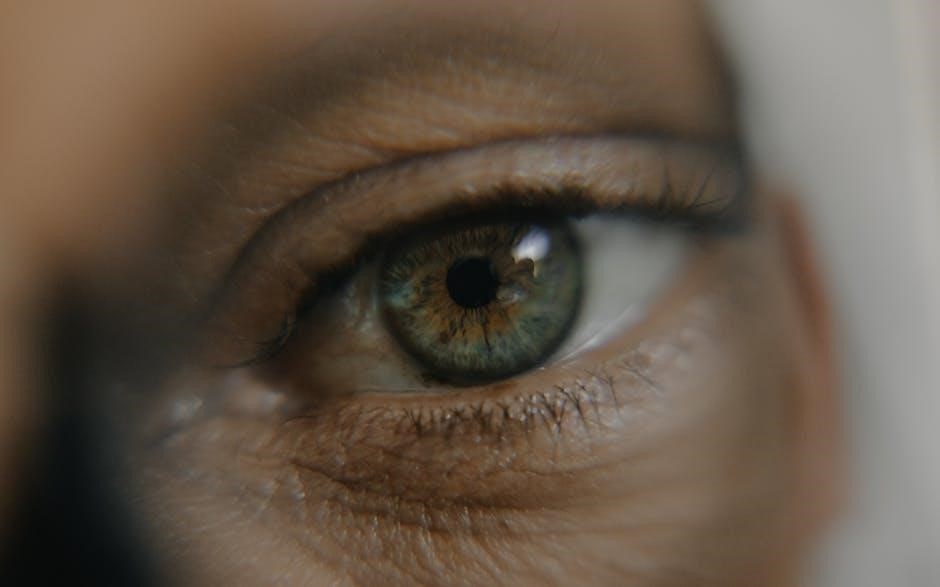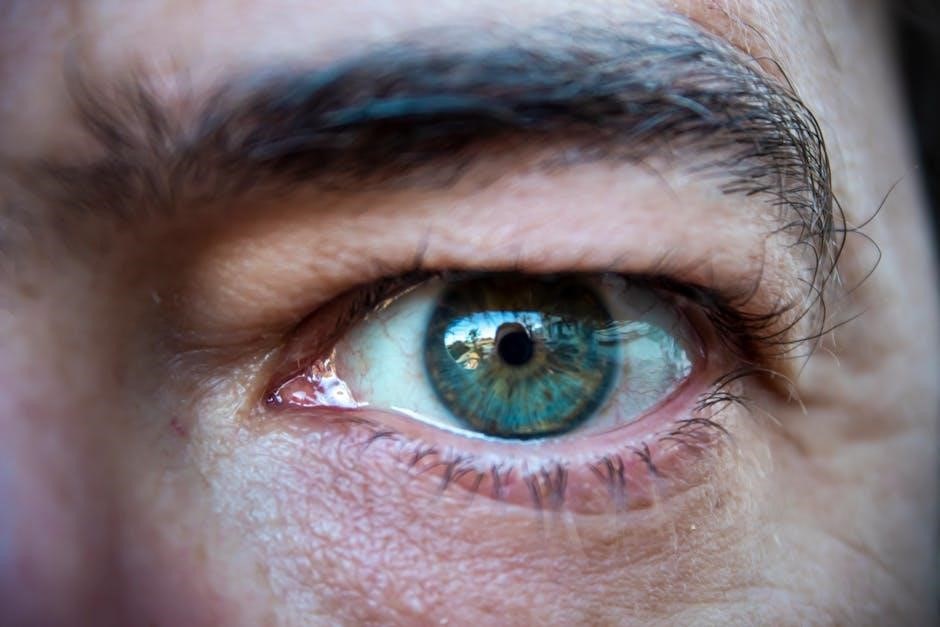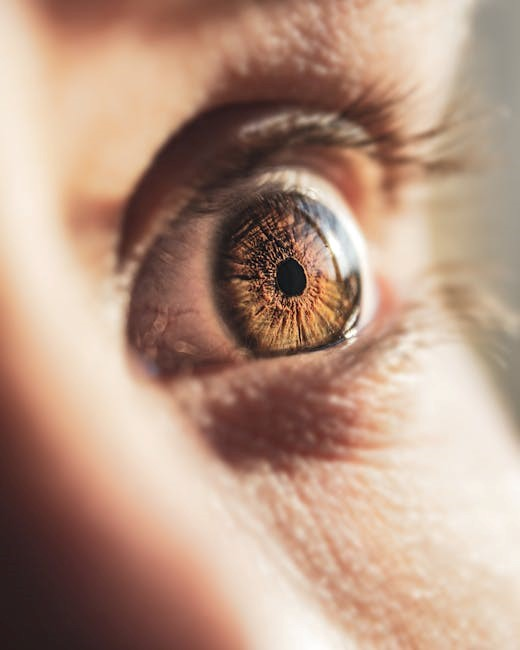The human face is a complex structure with muscles‚ bones‚ and skin working together to create expressions․ Facial anatomy involves understanding these components and their roles in conveying emotions․ The unique arrangement of facial muscles‚ attached to both bone and skin‚ enables a wide range of expressions․ This anatomical complexity is essential for communication‚ making it a key area of study in art‚ psychology‚ and science․ The book Anatomy of Facial Expression provides detailed insights through 3D models and color-coded images‚ helping to master this intricate subject․

1․1․ Overview of Facial Muscles and Their Structure
Facial muscles are embedded in the superficial fascia of the face‚ originating from skull bones and inserting into the skin․ These muscles are unique‚ as they are the only somatic muscles attaching one end to bone and the other to skin․ Their structure allows for precise control over facial expressions‚ making them essential for communication; Classified into groups like the head and orbital‚ they enable movements such as smiling‚ frowning‚ and eye expressions․ The book Anatomy of Facial Expression highlights their anatomy through color-coded 3D models‚ providing a detailed understanding of their arrangement and function․ This knowledge is crucial for artists‚ psychologists‚ and scientists studying human emotion and expression․
1․2․ The Role of Bones and Skin in Facial Expressions
The bones of the skull provide the structural foundation for facial expressions‚ while the skin acts as a medium for conveying emotions․ Facial bones‚ such as the zygomatic and mandible‚ form the underlying framework‚ influencing the shape and movement of facial features․ The skin‚ being elastic yet sensitive‚ responds to muscle contractions‚ allowing expressions to manifest․ Together‚ bones and skin create a dynamic system that enables both subtle and dramatic facial movements․ The interplay between these elements is explored in detail in Anatomy of Facial Expression‚ which uses 3D imaging and scans to illustrate how bones and skin contribute to the complexity of human facial anatomy․

Key Facial Muscles and Their Functions
Facial muscles are essential for creating expressions‚ with unique structures attaching to both bone and skin․ They enable precise movements‚ from subtle emotional cues to dynamic gestures‚ as detailed in Anatomy of Facial Expression․
2․1․ Muscles of the Orbital Group and Their Role in Eye Expressions
The orbital group of facial muscles is crucial for eye expressions‚ primarily controlled by the orbicularis oculi․ This muscle surrounds the eye‚ enabling actions like blinking‚ squinting‚ and closing the eyelids tightly․ Its movement contributes to expressions of surprise‚ fear‚ or concentration․ The orbicularis oculi is divided into orbital‚ palpebral‚ and lacrimal parts‚ each serving distinct functions․ For instance‚ the palpebral part facilitates involuntary blinking‚ while the orbital part assists in voluntary eye closure․ These muscles work in harmony to protect the eyes and convey emotions effectively․ Understanding their anatomy‚ as detailed in Anatomy of Facial Expression‚ is vital for artists and researchers aiming to capture realistic expressions‚ highlighting the intricate relationship between muscle movement and emotional communication․
2․2․ Muscles of the Mouth and Their Contribution to Emotional Expressions
The muscles of the mouth‚ primarily the orbicularis oris‚ play a vital role in forming facial expressions․ The orbicularis oris encircles the mouth‚ enabling actions like smiling‚ frowning‚ and puckering․ Its movements are influenced by the zygomaticus major and minor‚ which elevate the corners of the mouth‚ contributing to expressions of happiness or sadness․ The buccinator muscle assists in compressing the cheeks‚ aiding in actions like blowing air or chewing․ These muscles work synergistically to create nuanced emotional expressions‚ from subtle smiles to intense frowns․ The book Anatomy of Facial Expression provides detailed insights into their structure and function‚ emphasizing their importance in conveying emotions through facial movements․

The Science Behind Facial Expressions
The science behind facial expressions links anatomy and emotions‚ with muscles and bones working to convey feelings universally․ Researchers like Ekman and Darwin have studied these patterns‚ revealing how facial movements reflect emotional states across cultures‚ highlighting the biological basis of expression․

3․1․ The Connection Between Facial Anatomy and Emotions
The intricate relationship between facial anatomy and emotions is fundamental to understanding human expression․ Facial muscles‚ uniquely attached to both bone and skin‚ enable precise movements that convey emotional states․ Research‚ such as studies by Ekman and Darwin‚ demonstrates that specific muscle actions correspond to universal emotions like happiness‚ sadness‚ and anger․ These expressions are consistent across cultures‚ indicating a biological basis․ The book Anatomy of Facial Expression uses 3D imaging to illustrate how muscle contractions alter facial topography‚ creating emotionally resonant expressions․ This connection highlights the importance of facial anatomy in non-verbal communication‚ bridging the gap between physical structure and emotional experience․

3․2․ Universal Facial Expressions and Their Anatomical Basis

Universal facial expressions‚ such as happiness‚ sadness‚ and anger‚ are biologically rooted in specific muscle actions․ Research by Ekman and Darwin highlights that these expressions are consistent across cultures‚ indicating an evolutionary basis․ The zygomatic major muscle‚ for instance‚ is central to smiling‚ while the orbicularis oculi contributes to expressions of happiness․ The anatomical structure of facial muscles allows for precise movements that convey emotions․ These universal expressions are not arbitrary but are deeply tied to the arrangement and function of facial anatomy․ Understanding this connection provides insight into how emotions are communicated non-verbally‚ emphasizing the role of facial anatomy in human expression and social interaction․

Applications of Facial Anatomy Knowledge
Facial anatomy knowledge is applied in artistic techniques for realistic expressions and in scientific studies using 3D imaging and modeling to understand human emotions deeply․
4․1․ Artistic Techniques for Realistic Facial Expressions
Artists use facial anatomy knowledge to create realistic expressions by understanding muscle movements and their impact on facial forms․ 3D modeling and imaging techniques‚ as detailed in resources like Anatomy of Facial Expression‚ provide visual insights into how muscles interact․ These tools help artists master the subtleties of emotions‚ from slight eyebrow movements to complex mouth contours․ By studying the layering of facial muscles and their attachment points‚ artists can accurately depict expressions in sculptures‚ paintings‚ and digital art․ This anatomical understanding allows for authentic portrayal of emotions‚ making characters and portraits more relatable and engaging․ Such techniques are invaluable for achieving realism in various artistic mediums․
4․2․ Scientific Studies Using 3D Imaging and Modeling
Scientific studies leveraging 3D imaging and modeling have revolutionized the understanding of facial anatomy․ These technologies allow researchers to visualize and analyze facial structures in unprecedented detail․ 3D scans and models enable precise measurements of muscle movements and their effects on facial expressions․ This is particularly valuable in psychology and neuroscience for studying emotional responses․ Resources like Anatomy of Facial Expression provide comprehensive datasets‚ combining 3D renders with live models to demonstrate how muscles interact․ Such tools aid in mapping the anatomical basis of universal expressions‚ as identified by researchers like Ekman․ These advancements not only enhance scientific accuracy but also open new possibilities for understanding human emotion and communication․ This integration of technology and anatomy is transformative for both research and practical applications․
Understanding facial anatomy is crucial for mastering human communication and emotions․ 3D imaging advances this knowledge‚ enhancing fields like art and psychology․ Facial expressions truly are a universal language․

5․1․ The Importance of Understanding Facial Anatomy
Understanding facial anatomy is crucial for mastering human communication and emotional expression․ The intricate structure of muscles‚ bones‚ and skin enables universal expressions‚ essential for social interactions․ Artists and scientists benefit from this knowledge to accurately depict emotions․ Advances in 3D imaging and modeling have deepened our understanding‚ revealing how facial muscles collaborate to create realistic expressions․ This knowledge aids in fields like acting‚ animation‚ and psychology‚ enhancing empathy and storytelling․ The book Anatomy of Facial Expression highlights the significance of facial anatomy through detailed visuals‚ making it a valuable resource for anyone seeking to understand the human face’s complexity and its role in conveying emotions․
5․2․ Future Directions in the Study of Facial Expressions
Future research in facial expressions will likely focus on advanced imaging techniques like 3D modeling‚ CT scans‚ and MRI to deepen understanding of facial anatomy․ AI and machine learning could enhance analysis of muscle movements‚ enabling better recognition of emotions․ The integration of psychology and neuroscience will further explore how emotions are encoded in facial structures․ Artists and animators may benefit from realistic 3D renders of facial muscles‚ aiding in creating authentic expressions․ Additionally‚ studying diverse ethnicities and age groups will broaden the application of facial anatomy knowledge․ This multidisciplinary approach promises to revolutionize fields like entertainment‚ healthcare‚ and psychology‚ offering new insights into human communication and emotional expression․
